
The FlyBase situation has made the national news www.nbcnews.com/science/scie...
16.09.2025 13:08 — 👍 28 🔁 27 💬 0 📌 1@buttittalab.bsky.social
Studying cell cycle regulation during development at the University of Michigan. also at buttitta@drosophila.social

The FlyBase situation has made the national news www.nbcnews.com/science/scie...
16.09.2025 13:08 — 👍 28 🔁 27 💬 0 📌 1New cell cycle meeting starts next summer!
events.faseb.org/event/c40174...

Society for Developmental Biology Ethel Browne Harvey Postdoctoral Seminar Series Friday, September 12, 2025, 3:00pm - 4:00 pm Eastern Time Sarah Colijn (Washington University in St. Louis) Novel roles for centriolar protein WDR90 in endothelial cells and cardiac tissue Shyama Nandakumar (University of Pittsburgh) Ring canals in the larval adipose of Drosophila buffer stress response http://bit.ly/4649fWS
Don't miss the next #SDBPostdocSeminar this Friday, September 12 at 3pm ET featuring @sarahcolijn.bsky.social from Washington University in St. Louis and @shyama13.bsky.social from the University of Pittsburgh. Register today and join us. bit.ly/4649fWS
09.09.2025 21:42 — 👍 9 🔁 4 💬 1 📌 1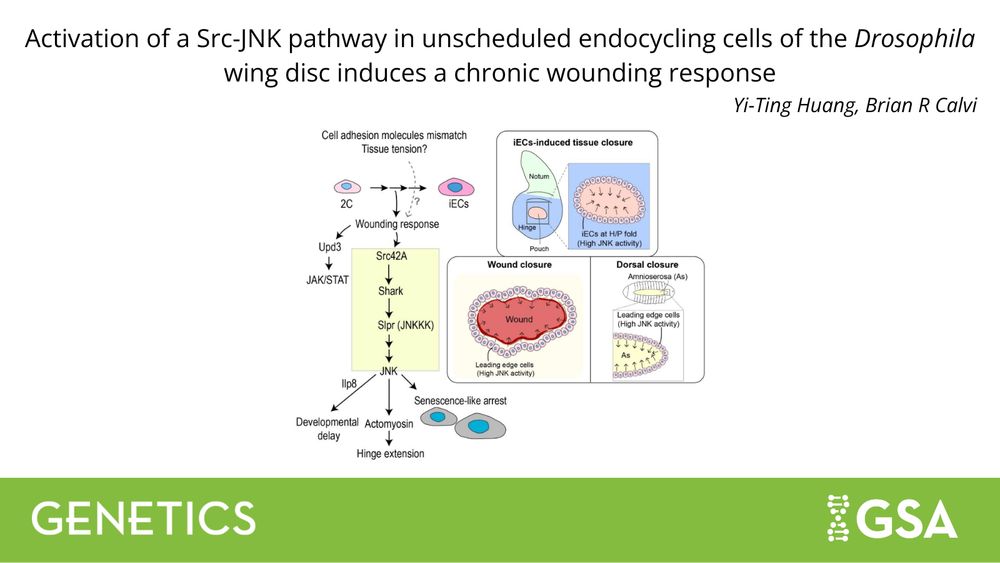
New in #GENETICS: From a genetic screen, Yi-Ting Huang and Brian Calvi identified the Src42A-Shark-Slpr pathway as an upstream regulator of JNK in induced endocycling cells in #Drosophila wing disc. buff.ly/wJmn8lp
03.09.2025 20:03 — 👍 3 🔁 4 💬 0 📌 1'The ship is going down and we are powerless'- The Impact of Federal Funding Changes on Researchers Training the Next Generation of Scientists https://www.biorxiv.org/content/10.1101/2025.08.22.671828v1
28.08.2025 05:03 — 👍 1 🔁 1 💬 0 📌 0Haha! Been there. Did not like.
25.08.2025 05:09 — 👍 1 🔁 0 💬 0 📌 0Thank you for featuring this work on #polyploidy and organ growth.
17.08.2025 02:19 — 👍 2 🔁 0 💬 0 📌 0Highly frequent undesired insertional mutagenesis during Drosophila genome editing https://www.biorxiv.org/content/10.1101/2025.08.11.669658v1
12.08.2025 04:17 — 👍 1 🔁 1 💬 0 📌 0This 👇🏻
12.08.2025 01:40 — 👍 1 🔁 0 💬 0 📌 0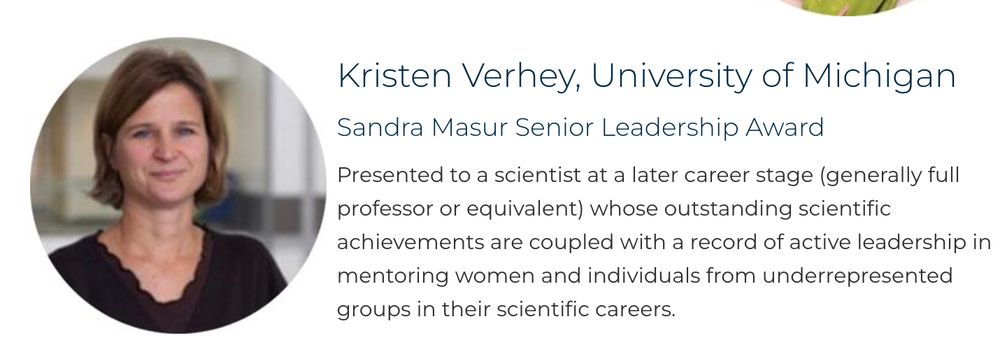
Picture of Kristen Verhey, University of Michigan Sandra Masur Senior Leadership Award Presented to a scientist at a later career stage (generally full professor or equivalent) whose outstanding scientific achievements are coupled with a record of active leadership in mentoring women and individuals from underrepresented groups in their scientific careers.
Congrats to Kristen Verhey @kjverhey1.bsky.social, winner of
@ascbiology.bsky.social's Sandra Masur Senior Leadership Award. She combines remarkable scientific insight into molecular motors with leadership and mentoring in cell biology 🧪
www.ascb.org/society-news...
A window of cell cycle plasticity enables imperfect regeneration of an adult postmitotic organ in Drosophila https://www.biorxiv.org/content/10.1101/2025.06.05.658044v1
06.06.2025 11:33 — 👍 0 🔁 1 💬 0 📌 0Evidence for Transcriptomic Conservation Between the Main Cells of the Drosophila Prostate-Like Accessory Gland and Basal Cells of the Mammalian Prostate. https://www.biorxiv.org/content/10.1101/2025.06.05.658085v1
09.06.2025 06:37 — 👍 0 🔁 1 💬 0 📌 0Thank you for the highlight of our work! #drosophila #cancer model.
05.06.2025 22:37 — 👍 1 🔁 2 💬 0 📌 0Thank you for the highlight of our work! #drosophila #cancer model.
05.06.2025 22:37 — 👍 1 🔁 2 💬 0 📌 0As a “fly person” even I have to admit this is pretty cool! 😎
01.06.2025 12:54 — 👍 3 🔁 0 💬 0 📌 0Proposed cut to NSF Biology budget is 70%.
70%. Seventy.
Call your senators & reps nonstop. Give them numbers on NSF impact for state/district. tableau.external.nsf.gov/views/NSFbyN... explain this will decimate the economy if their districts, especially if it has a major research univ. 🧪
Hi Erik, can we also be added to the feed? sites.lsa.umich.edu/buttitta-lab/
16.05.2025 22:18 — 👍 1 🔁 0 💬 1 📌 0Pleased to share and amplify our most recent paper. Looking at #oncogene effects in the #drosophila #prostate which is #postmitotic and #polyploid. 🧪
16.05.2025 22:04 — 👍 5 🔁 1 💬 0 📌 0Love seeing the cancer cell biology collection @jcb.org! The image they went with for the cover is also pretty great 😜. rupress.org/collection/6...
23.04.2025 15:42 — 👍 9 🔁 3 💬 0 📌 0Wow! This is so cool!
17.04.2025 00:04 — 👍 1 🔁 0 💬 0 📌 0How does one little diploid nucleus contain all of the source for the massive amount of transcription that must take place in this cell!
16.04.2025 00:17 — 👍 7 🔁 0 💬 1 📌 0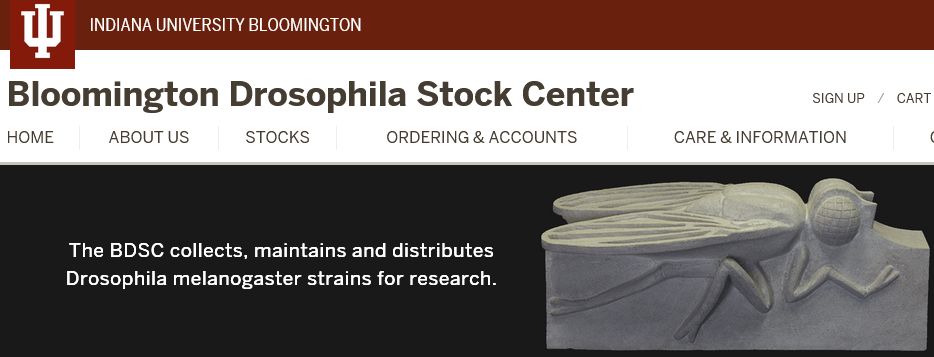
If using Bloomigton #Drosophila Stock Center stocks, pls. acknowledge them & their NIH funding (P40 OD018537). Papers listing this no. are being harvested as evidence. We massively depend on the @bdsc.bsky.social & they need our support in these dire times! @flybase.bsky.social @fly-eds.bsky.social
10.04.2025 06:06 — 👍 93 🔁 102 💬 0 📌 5
Published an op-ed for @cnn.com: “Nobel laureate: I owe America my success. Today, its scientific future is in danger.”
A personal reflection on what’s at stake as science funding gets slashed. I’d be grateful if you could amplify both in and beyond the science world.
www.cnn.com/2025/04/09/h...
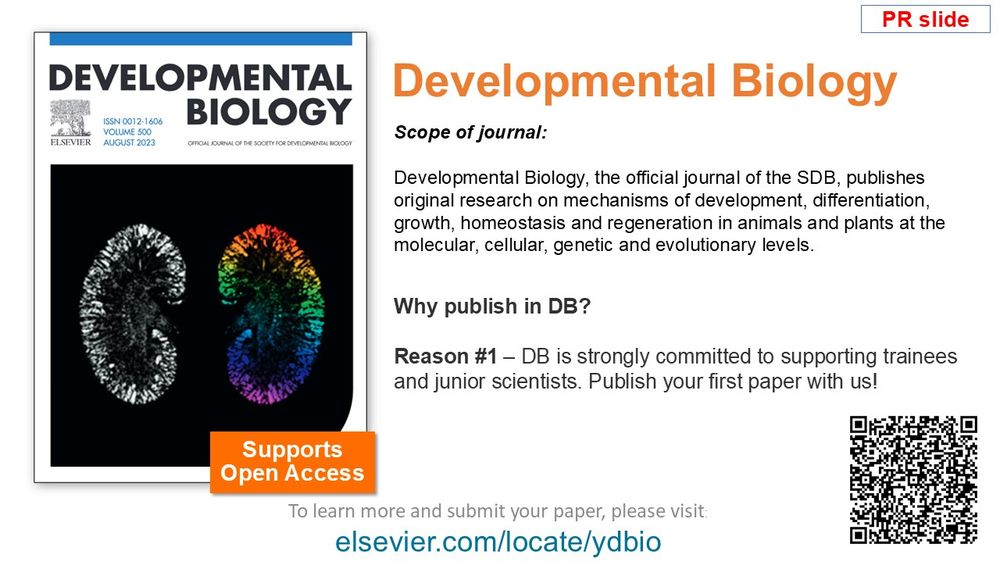
Developmental Biology, the official journal of the SDB, publishes original research on mechanisms of development, differentiation, growth, homeostasis and regeneration in animals and plants at the molecular, cellular, genetic and evolutionary levels.
Why Publish in Developmental Biology?
1/8
Reason #1 - DB is strongly committed to supporting trainees and junior scientists. Publish your first paper with us!
DB is the official journal of the SDB @socdevbio.bsky.social
Learn more here
elsevier.com/locate/ydbio
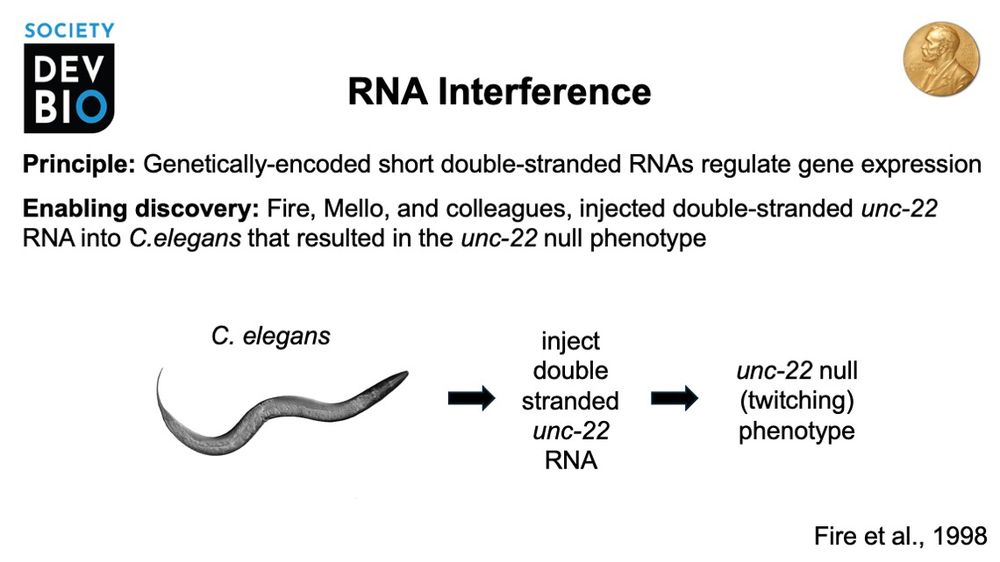
Potent and specific genetic interference by double-stranded RNA in Caenorhabditis elegans. Nature. 1998
Developmental biology research leads to fundamental discoveries for biomedical research.
12/12
RNA Interference. Fire et al., 1998 PMID: 9486653
Worm image by Tokiko Furuta
@socdevbio.bsky.social
@rrbehringer.bsky.social
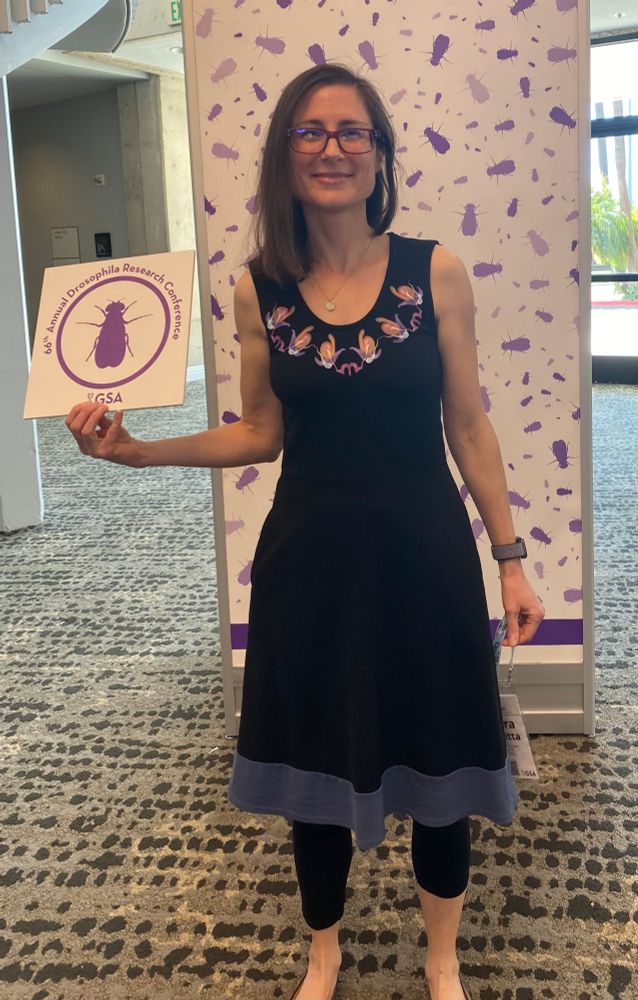
The “drosophila dress” at #dros25. (For the fly peeps - zoom in on the pattern at the neckline)
25.03.2025 23:11 — 👍 3 🔁 0 💬 0 📌 0
Formation and detection of RNA-DNA hybrid molecules in cytological preparations. Proc Natl Acad Sci U S A. 1969
Developmental biology research leads to fundamental discoveries for biomedical research.
5/12
In Situ Hybridization
Gall & Pardue, 1969. PMID: 4895535
Frog image by Brandy Walker (Rachel Miller Lab)
@socdevbio.bsky.social
@rrbehringer.bsky.social
Hi Esther! Great idea! We’d like to be added please!
23.03.2025 17:36 — 👍 1 🔁 0 💬 1 📌 0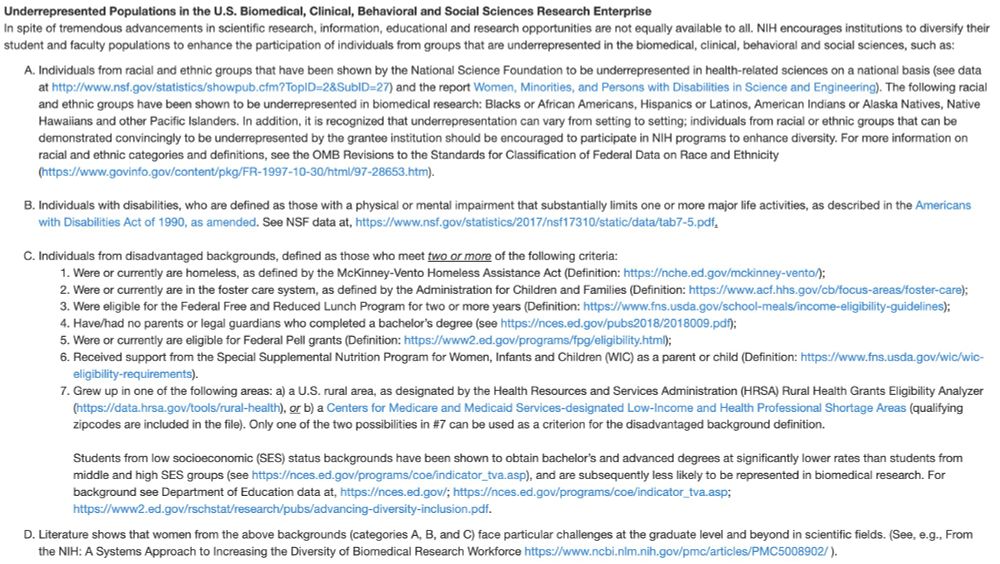
Underrepresented Populations in the U.S. Biomedical, Clinical, Behavioral and Social Sciences Research Enterprise Individuals from racial and ethnic groups that have been shown by the National Science Foundation to be underrepresented in health-related sciences on a national basis Individuals with disabilities, who are defined as those with a physical or mental impairment that substantially limits one or more major life activities, as described in the Americans with Disabilities Act of 1990, as amended. See NSF data at, https://www.nsf.gov/statistics/2017/nsf17310/static/data/tab7-5.pdf. Individuals from disadvantaged backgrounds, defined as those who meet two or more of the following criteria: Were or currently are homeless, as defined by the McKinney-Vento Homeless Assistance Act (Definition: https://nche.ed.gov/mckinney-vento/); Were or currently are in the foster care system, as defined by the Administration for Children and Families (Definition: https://www.acf.hhs.gov/cb/focus-areas/foster-care); Were eligible for the Federal Free and Reduced Lunch Program for two or more years (Definition: https://www.fns.usda.gov/school-meals/income-eligibility-guidelines); Have/had no parents or legal guardians who completed a bachelor’s degree (see https://nces.ed.gov/pubs2018/2018009.pdf); Were or currently are eligible for Federal Pell grants (Definition: https://www2.ed.gov/programs/fpg/eligibility.html); Received support from the Special Supplemental Nutrition Program for Women, Infants and Children (WIC) as a parent or child (Definition: https://www.fns.usda.gov/wic/wic-eligibility-requirements). Grew up in one of the following areas: a) a U.S. rural area, as designated by the Health Resources and Services Administration (HRSA) Rural Health Grants Eligibility Analyzer (https://data.hrsa.gov/tools/rural-health), or b) a Centers for Medicare and Medicaid Services-designated Low-Income and Health Professional Shortage Areas (qualifying zipcodes are included in the file
Before it is all taken down, a good reminder that the NIH has (or maybe had) an expansive definition of what constitutes diversity. So this means less participation by #womeninSTEM, #URMinSTEM, #disabledinSTEM, plus those that grew up rural, #firstgen, unhoused, or low-income.
#academicSky 🧪👩🔬 2/n
Reposting as the deadline to submit draws near.
14.01.2025 02:42 — 👍 0 🔁 0 💬 0 📌 0